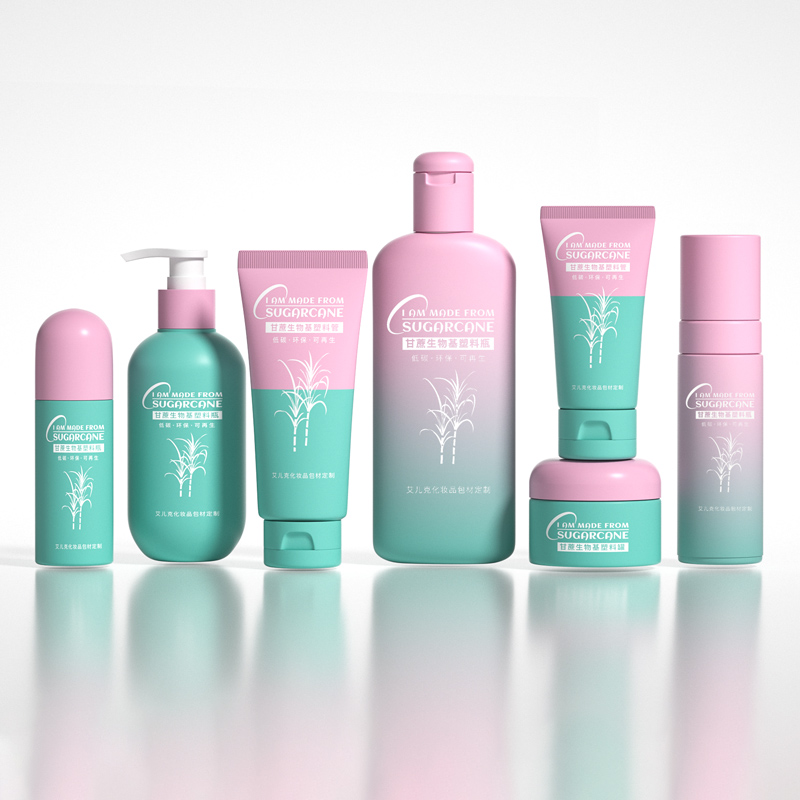Introduction: Why Sugarcane-Based Bioplastics Are the Future of Packaging
In today’s eco-conscious world, companies are actively seeking ways to reduce their environmental impact. Packaging plays a critical role in this movement, and one of the most promising innovations is sugarcane-based bioplastics. Derived from renewable resources, these bioplastics offer a range of environmental benefits, including reduced carbon emissions and recyclability.
At IDEALPAK, we provide packaging solutions that utilize 100% renewable sugarcane-derived polyethylene, helping businesses move towards more sustainable operations. This article explores five key benefits of sugarcane-based bioplastics and highlights why they are the future of eco-friendly packaging.

1. What Are Sugarcane-Based Bioplastics?
Sugarcane-based bioplastics are a type of bio-based polyethylene (PE) derived from sugarcane. Instead of using fossil fuels to create plastics, this process relies on converting sugarcane into ethanol, which is then polymerized into biopolyethylene.
The production process involves several stages:
- Extraction: Sugarcane is harvested and processed to extract glucose.
- Fermentation: The glucose is fermented to produce bioethanol.
- Polymerization: Bioethanol undergoes polymerization to form bio-based polyethylene .
The final product is a versatile material that can be molded into bottles, tubes, and containers, making it an ideal solution for sustainable packaging.

2. Lower Carbon Footprint
One of the most significant advantages of sugarcane-based bioplastics is their reduced carbon footprint. The sugarcane plant absorbs carbon dioxide (CO₂) from the atmosphere during its growth cycle, helping to offset the emissions generated during the production of the bioplastics.
- According to a study by Braskem, the leading producer of bio-based polyethylene, every ton of sugarcane-based polyethylene captures and removes up to 3.09 tons of CO₂ from the atmosphere, making it a carbon-negative material (Sugarcane products).
This reduction in greenhouse gas emissions makes sugarcane-based bioplastics a much more sustainable option compared to petroleum-based plastics, which emit significant amounts of CO₂ during production.
3. 100% Recyclable
Another important benefit is that sugarcane-based bioplastics are 100% recyclable, just like traditional polyethylene. This means that the bioplastic can be collected, processed, and reformed into new products after use, creating a closed-loop system.
- Research by the Ellen MacArthur Foundation emphasizes the importance of moving towards a circular economy, where materials are continuously recycled and reused, minimizing waste and environmental impact (Sugarcane products).
By integrating sugarcane-based bioplastics into their packaging solutions, companies can contribute to this circular economy, reducing waste and promoting sustainability.
4. Renewable Resource: A Key to Sustainability

Sugarcane is a renewable resource, meaning it can be harvested annually without depleting natural resources. Unlike fossil fuels, which are finite and take millions of years to form, sugarcane can be cultivated seasonally, making it a more sustainable choice for bioplastic production.
Moreover, sugarcane’s fast growth and high yield per hectare make it an efficient crop for producing bioplastics. The use of bio-based materials reduces the environmental impact of traditional plastic production, while also providing opportunities for regions with suitable climates to grow sugarcane as a renewable energy source.
5. Versatility for Various Industries
Sugarcane-based bioplastics offer versatility in packaging applications across several industries, from cosmetics to food and beverages. At IDEALPAK, we offer a range of sustainable packaging products made from sugarcane-based polyethylene, including:
- HDPE & LDPE Bottles and Jars: Widely used for personal care, cosmetics, and household products.
- Flexible Tubes: Ideal for creams, lotions, and gels, offering both durability and sustainability.
These products maintain the same level of performance as traditional plastics, ensuring durability and practicality without compromising on environmental responsibility.
6.Challenges and Considerations
While sugarcane-based bioplastics present many advantages, there are also some challenges to consider:
- Production Costs: Initially, the production of bio-based plastics can be more expensive than fossil fuel-based plastics due to the costs of raw materials and processing technology. However, as demand for sustainable solutions grows, economies of scale may lower these costs.
- Waste Management Infrastructure: For the full environmental benefits to be realized, sugarcane-based plastics require efficient recycling systems. Without proper sorting and processing facilities, these bioplastics may still end up in landfills.
However, the increasing emphasis on sustainable practices is driving improvements in waste management and recycling infrastructure, making it easier for businesses and consumers to benefit from bioplastics.
7.Conclusion: Embrace a Sustainable Future with Sugarcane-Based Bioplastics
Incorporating sugarcane-based bioplastics into your packaging strategy is a step toward reducing your company’s environmental footprint. These materials offer a range of benefits, from a lower carbon footprint to 100% recyclability, making them an ideal solution for companies looking to meet growing consumer demand for eco-friendly packaging.
At IDEALPAK, we are committed to providing innovative, sustainable packaging solutions. Whether you’re in the cosmetics, food, or personal care industry, our sugarcane-based products can help you achieve your sustainability goals while maintaining the quality and durability your customers expect.
Explore our range of sustainable packaging solutions and make the switch to sugarcane-based bioplastics today.
For more information, visit IDEALPAK.
- How Packaging Can Improve the Shelf Life of Your Cosmetic Products
- What Role Does Packaging Play in Customer Retention in the Cosmetic Industry?
- The Importance of Secure Packaging in Preventing Counterfeit Cosmetics
- How to Choose the Best Eco-Conscious Packaging for Cosmetic
- Why Post-Consumer PCR Recycled Plastic is the Future of Cosmetic Packaging


